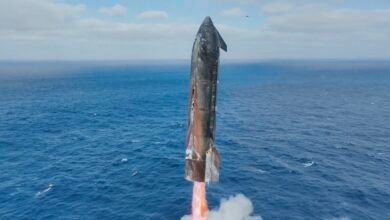SpaceX’s Starship Lesson: “We Need to Seal the Tiles”

▼ Summary
– SpaceX has diagnosed issues with Starship’s heat shield and developed a plan for the next test flight following its August 26 launch.
– The August 26 test was the 10th flight of the world’s largest rocket, combining the Super Heavy booster and Starship upper stage.
– Key objectives included resolving propulsion and propellant system issues from prior flights and gathering heat shield data during reentry.
– Starship achieved a controlled splashdown in the Indian Ocean, landing within 10 feet of its target point.
– Visible damage and discoloration occurred, attributed to oxidation of test metallic heat shield tiles, though most ceramic tiles remained intact.
Two weeks after the most recent Starship test flight, SpaceX engineers have pinpointed key challenges with the vehicle’s thermal protection system and are already mapping out upgrades for the next mission. Bill Gerstenmaier, SpaceX’s Vice President of Build and Flight Reliability, shared these insights during a presentation at the American Astronautical Society’s Glenn Space Technology Symposium in Cleveland.
The August 26 launch from Starbase, Texas, marked the tenth full-scale test of the combined Super Heavy booster and Starship upper stage, the most powerful rocket ever built. This flight aimed to resolve earlier issues with propulsion and propellant systems while gathering critical data on the performance of Starship’s heat shield during atmospheric reentry.
Gerstenmaier described the mission as “extremely well” executed. More than an hour after liftoff, the spacecraft guided itself to a precise splashdown in the Indian Ocean, landing within just 10 feet of its intended target near an instrumented buoy. Video footage captured the vehicle’s dramatic final moments: it descended belly-first before igniting three of its six Raptor engines to pivot upright just before touching the ocean surface.
Despite the successful landing, the vehicle showed signs of wear. Damage was visible on the aft section and control surfaces, and a prominent rusty-orange streak ran along one side of the 171-foot-tall ship. Elon Musk clarified that the discoloration resulted from oxidation on experimental metallic heat shield tiles, which were tested alongside the primary ceramic tiles. In a significant improvement over past flights, nearly all of the heat shield tiles remained securely attached from launch through splashdown.
(Source: Ars Technica)





